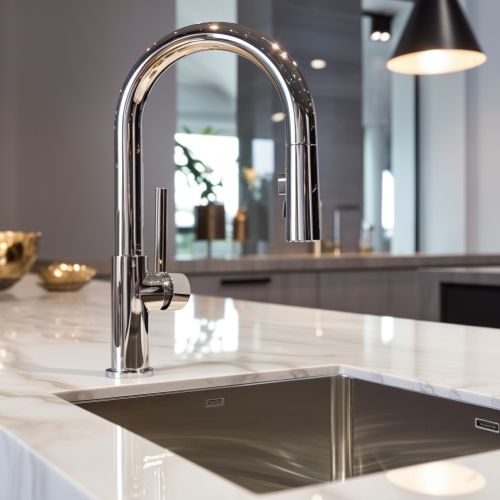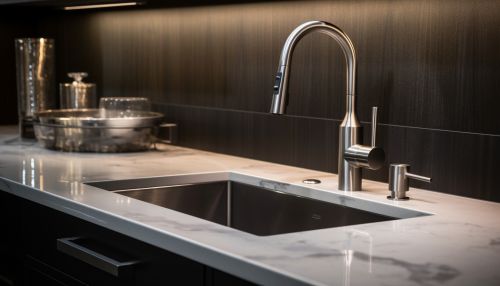Kitchen Faucet
Introduction
The kitchen faucet, also known as a tap or spigot, is an essential component in any kitchen, providing a controlled flow of water for cooking, cleaning, and other tasks. This article delves into the intricacies of kitchen faucets, discussing their history, types, components, installation, and maintenance, as well as the science behind their operation.


History
The history of the kitchen faucet dates back to ancient civilizations, where rudimentary versions of faucets were used to control the flow of water in public baths and private homes. The Roman Empire was particularly noted for its advanced plumbing systems, which included the use of faucets. Over the centuries, the design and functionality of kitchen faucets have evolved significantly, with the advent of new materials, technologies, and design concepts.
Types of Kitchen Faucets
There are several types of kitchen faucets available in the market, each with its unique features and benefits. Some of the most common types include:
Single-Handle Faucets
Single-handle faucets have one handle that controls both the water temperature and flow rate. The handle is typically mounted on the top or side of the faucet.
Double-Handle Faucets
Double-handle faucets have two separate handles for hot and cold water, allowing for more precise temperature control.
Pull-Out and Pull-Down Faucets
Pull-out and pull-down faucets feature a spray head that can be pulled out or down from the faucet body, providing increased flexibility and reach.
Touchless Faucets
Touchless faucets, also known as automatic or sensor faucets, use infrared sensor technology to detect the presence of an object (like a hand) under the spout and automatically turn the water on or off.
Components of a Kitchen Faucet
A kitchen faucet is composed of several components, each playing a crucial role in its operation. These include the handle(s), spout, cartridge, aerator, and supply lines.
Handle(s)
The handle(s) of a kitchen faucet control the flow and temperature of the water. In single-handle faucets, one handle controls both functions, while in double-handle faucets, there are separate handles for hot and cold water.
Spout
The spout is the part of the faucet from which the water is dispensed. Spouts can vary in design, length, and height, and some are equipped with a pull-out or pull-down spray head for added functionality.
Cartridge
The cartridge is a component inside the faucet that controls the water flow and temperature. It works by regulating the mix of hot and cold water based on the position of the handle(s).
Aerator
The aerator is a device at the end of the spout that mixes air with the water to reduce splashing and increase the perceived water pressure.
Supply Lines
The supply lines connect the faucet to the home's water supply. There are typically two supply lines for a kitchen faucet, one for hot water and one for cold water.
Installation of a Kitchen Faucet
The installation of a kitchen faucet involves several steps, including removing the old faucet, preparing the installation site, connecting the new faucet to the water supply lines, and testing the installation. It's a task that can be accomplished by a homeowner with basic DIY skills or by a professional plumber.
Maintenance and Repair
Regular maintenance of a kitchen faucet can extend its lifespan and ensure its optimal performance. This includes cleaning the aerator, checking for leaks, and replacing worn-out components. When a faucet becomes damaged or dysfunctional, it may require repair or replacement.
The Science Behind Kitchen Faucets
Kitchen faucets operate based on principles of fluid dynamics and mechanics. When the handle of a faucet is turned, it opens a valve (controlled by the cartridge), allowing pressurized water from the supply lines to flow through the spout. The aerator at the end of the spout helps to evenly distribute the water and reduce splashing.
